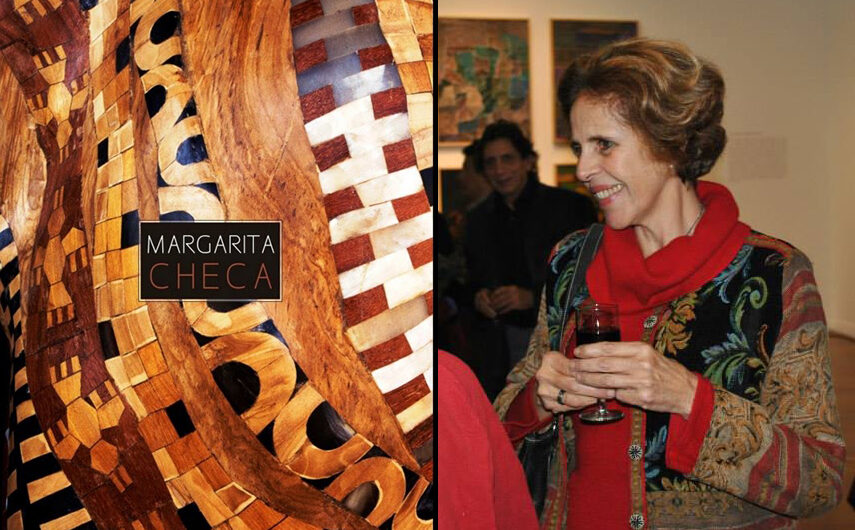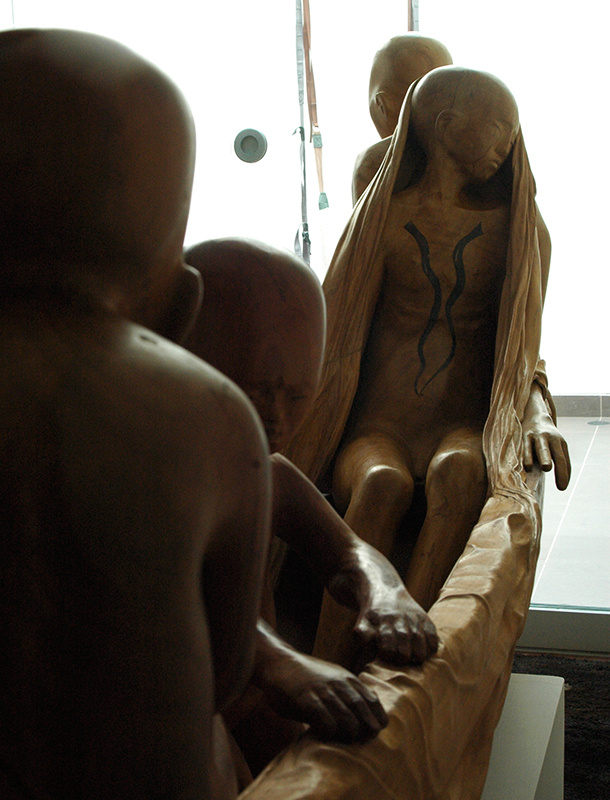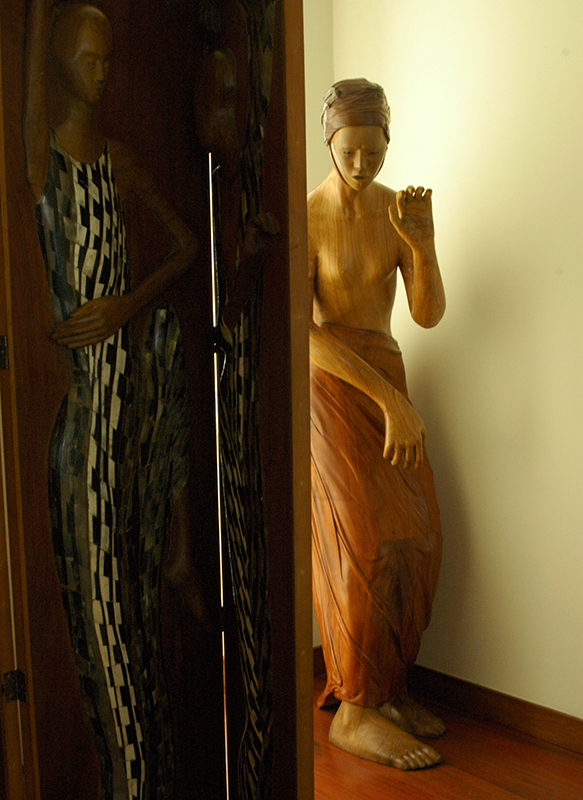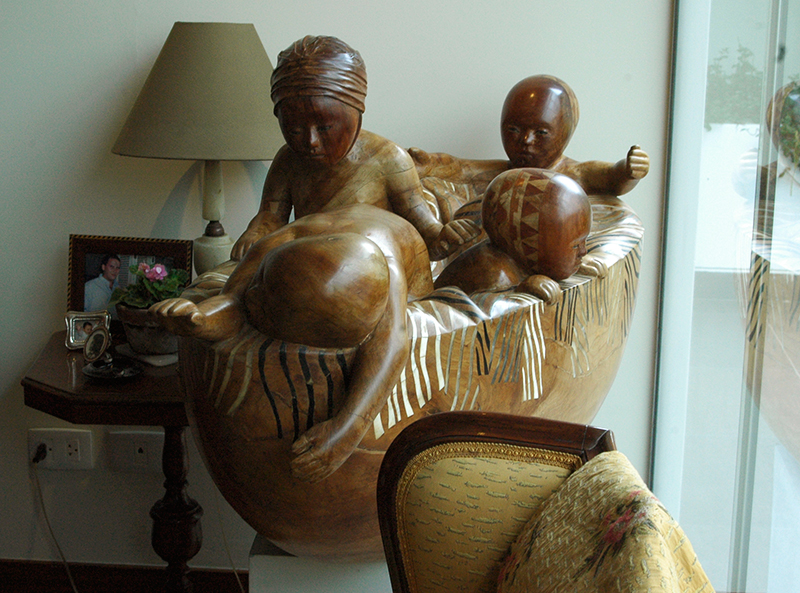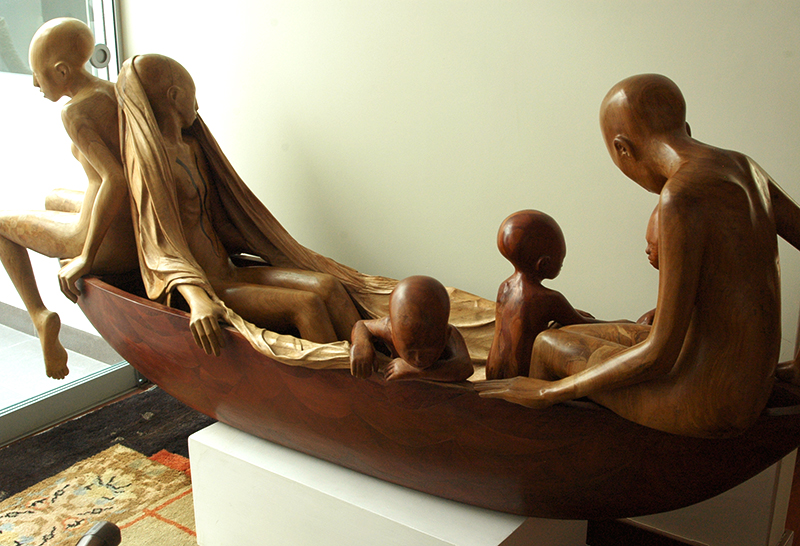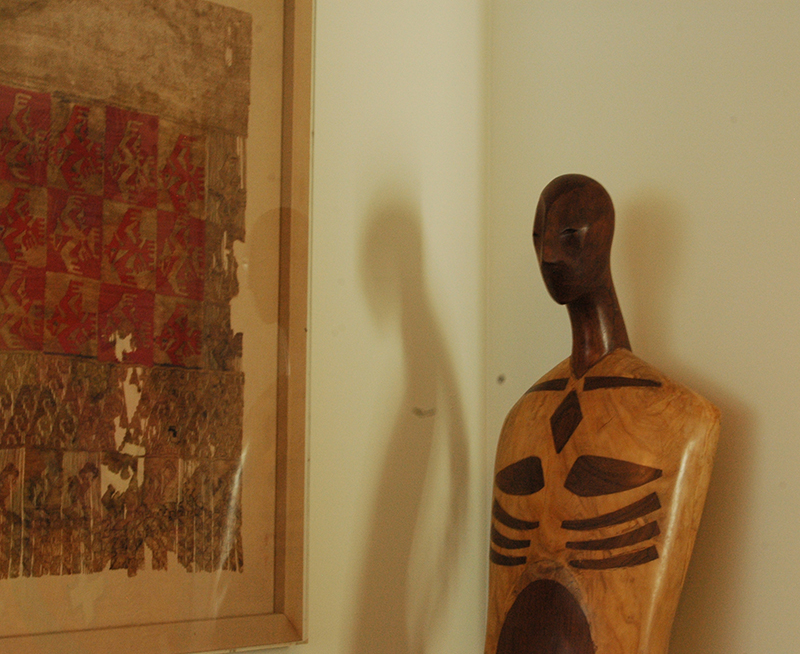Peruvian sculptor Margarita Checa, born in Lima, has a reputation in the art world for being one of the most important contemporary sculptors in South America, known for carving life-size and larger human figures with incredibly emotive features in wood and bronze.
Peruvian Sculptor Margarita Checa
Though she began her artistic career drawing at the Pontificia Universidad Católica del Peru, she discovered that sculpture was her ultimate niche, beginning with works in bronze and later moving on to wood as her principal material. Her works have been exhibited in galleries around Peru like Lucía de la Puente in Lima and internationally at galleries in the United States, Spain, Panama and Mexico. Most recently in September 2013, the Peruvian Institute of North American Culture (ICPNA) in Lima housed a retrospective of Checa’s works from 1972-2013, curated by art historian and critic, Luis Eduardo Wuffarden. As a product of this exhibition, the ICPNA has just this week published a book, Margarita Checa. Muestra antológica, 1972-2013, showcasing the sculptor’s oeuvre from her student years to the present.
Meeting with Margarita Checa
When Aracari learned about the publication a few months ago, we met with the artist at her home in Lima in honor of the upcoming release. Upon entering her apartment, the most striking aspect of is, not surprisingly, the sculptures and art that fill the space. Wooden sculptures by Checa flank each corner, decorate the walls, dominate small tables. In addition to her own works are pieces by Peruvian artists like a painting by José Tola and a bronze piece by her mentor, artist Cristina Galvez. After Galvez’s passing in 1982, Checa rented the Cristina Galvez Atelier, where she and other artists exhibited work and taught classes. Though she has stopped teaching for some time, dedicating herself fully to her works, she has considered taking up teaching again in the future.
The morning of the visit, we sat in her living room with cups of cacao tea and talked about her experience as a sculptor, about her works and what she is doing at the moment. Having returned recently from Tarapoto in the Peruvian Amazon, she explained that she was considering moving there, buying a home, where she could have her studio with space to house her works and continue creating in the future. Presently, she must commute nearly two hours to her studio in Villa El Salvador in southern Lima, which she explained, makes for an extremely long day. While she is not creating anything at the moment, when she does work, she has several assistants with whom she has worked for years. In the studio she has an electric saw, pneumatic hammer, different types of gouges (chisels), and a Dremel Tool, which she uses for sculpting the minute details.
Crafting recycled wood
Checa strives to utilize only recycled wood in her pieces from trees that have already fallen naturally or wood that can be reused. She works mostly with olive wood for its softness and rich color, but she inlays her works with other materials like bull horns, precious metals such as silver and incorporates other colorful woods like mahogany, huayruro, cachimbo and yacushapana from the Peruvian Amazon, where she has recently been sourcing her wood. For a time during the 1990’s she moved to Costa Rica with her family, where she continued working, using wood from the rainforests there. However, she soon returned to Peru, the country that most resonates with her and has had the greatest influence on her work and development as an artist.
Checa is fascinated by myths and by what lies beneath human consciousness, by symbols and dreams, manifested in the highly emotional and whimsical nature of her figures. Seeing her sculptures in pictures is quite different from encountering them in person. The rich colors of the wood, the precision of the details and the intensity of the moment captured in these sculptures reveals a focus on the human condition, a common pain of existence and our connection to the earth. The works are primal and forceful with beauty and grace that command attention. The figures are mostly nude with elongated skulls like our early ancestors. The fluidity of the forms, the lightness that they evoke in spite of the solidness of the material is perhaps the most impressive aspect.
I found the sculpture, “Infinite River”, in a small room beside a glass door and small patio. There are no oars in this boat, and one woman sits perched on the stern, staring ahead while a man rests behind her, cloaked in a sheet, unable to see the direction of their journey. Another woman sits in the back, gazing down on three little children. One wonders, where this boat is in space, in time, and where it is headed. The boat symbolizes their journey, and as the title indicates, it is infinite as the river that pulls them, a metaphor for our journey in life. It is, of course, a beautiful piece, with a mix of olive wood, ceder and shihuahuaco with an inlay of bull’s horn.
Without a doubt, Margarita Checa is a gifted artist whose body of work reveals her growth as a sculptor and the evolution of her technique and creativity, and each sculpture emits a powerful energy. The book, Margarita Checa. Muestra antológica, 1972-2013, is a gem for anyone interested in Latin American art and sculpture alike, including drawings from Checa’s years as a student through to some of her most recent works that were displayed at the ICPNA. When asked about the book, Checa was pleased and proud of the work that had gone into its production. The book is for sale at the ICPNA in Miraflores and will no doubt be a treasure for the collection of many art aficionados.
To see more of her works, you can visit her website and if you are interested in her works or her book contact us for more information.

